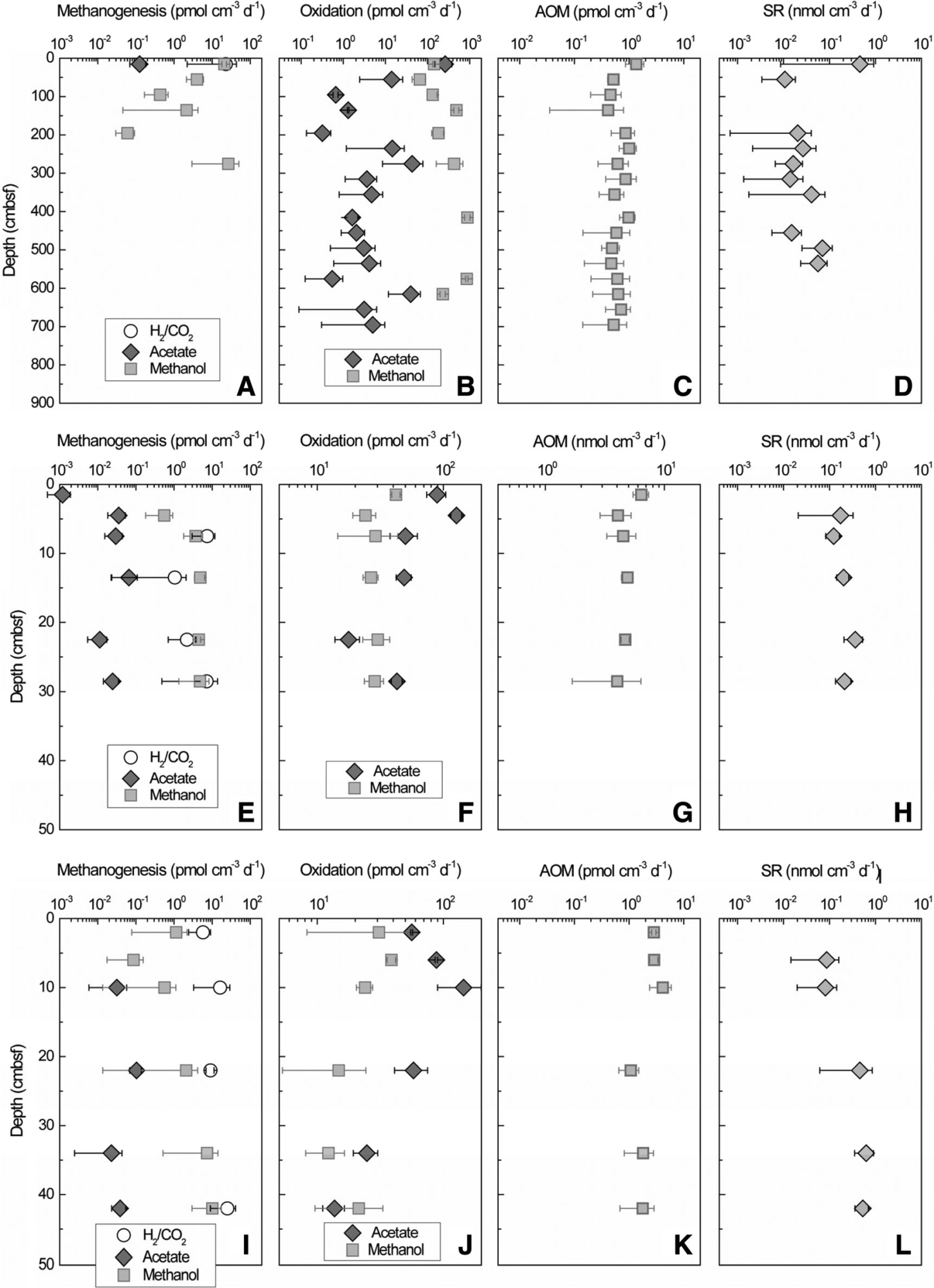Biogeochemistry, microbial activity, and diversity in surface and subsurface deep-sea sediments of South China Sea
Deep-sea environments are the largest ecosystem of the global biosphere and constitute a crucial role in global biogeochemical cycles. We integrated biogeochemical and molecular ecological approaches to investigate microbial activity and diversity, with the goal of elucidating pathways and regulations of methane cycling and low molecular weight (LMW) compounds metabolism in different deep-sea sediments of the South China Sea. We found that methanogenesis, anaerobic oxidation of methane, and sulfate reduction occurred concurrently with low rates in surface sediments of the Haima area (~ 50 cm push cores) and in subsurface sediments of the Shenhu area (~ 8 m piston core). In the presence of sulfate, methanogenesis was fueled by methylotrophic substrates, in agreement with thermodynamic calculations as well as the detection of the methylotrophic methanogenic genus Methanococcoides. Higher oxidation rates of LMW compounds than methanogenesis rates, suggested acetate, and to a lesser extent, methanol and methylamine, were predominantly utilized as an energy source by nonmethanogenic microorganisms (e.g., sulfate-reducing bacteria). Diverse methanotrophic archaea (e.g., ANME-1a/b and ANME-2a/b) and sulfate-reducing bacteria (e.g., Desulfarculaceae and Desulfobacteraceae) were observed and the abundance of mcrA and dsrA genes varied over depth and between sites. Dominant archaeal groups, such as Bathyarchaeota, Thermoplasmatale, Woesearchaeota, Lokiarchaeota, were consistently detected at both areas. Multivariate statistical analysis demonstrated sulfate was the most relevant environmental variable that correlated with the archaeal community composition. These results suggested that the presence of sulfate controlled methane cycling and LMW carbon metabolism pathways, and also affected the composition of the microbial community.

Depth profiles of methanogenesis from H2/CO2, acetate, and methanol (A, E, I), acetate and methanol oxidation (B, F, J), AOM (C, G, K), and SR (D, H, L) rates at W22 (A–D), ROV2 (E–H) and ROV3 (I–L) of SCS. AOM and SR rates at ROV2 were measured under in situ pressure and temperature with the addition of 5 mmol L−1 methane. Note the different units for AOM rates at ROV2. Error bars represent the SD from triplicate measurements.
Reference:
Guangchao Zhuang, Lei Xu, Qianyong Liang, Xibei Fan, Zhen Xia, Samantha B. Joye, Fengping Wang. (2019). Biogeochemistry, microbial activity, and diversity in surface and subsurface deep-sea sediments of South China Sea. Limnology and Oceanography. 00, 1-19.
Link: aslopubs.onlinelibrary.wiley.com/doi/full/10.1002/lno.11182

